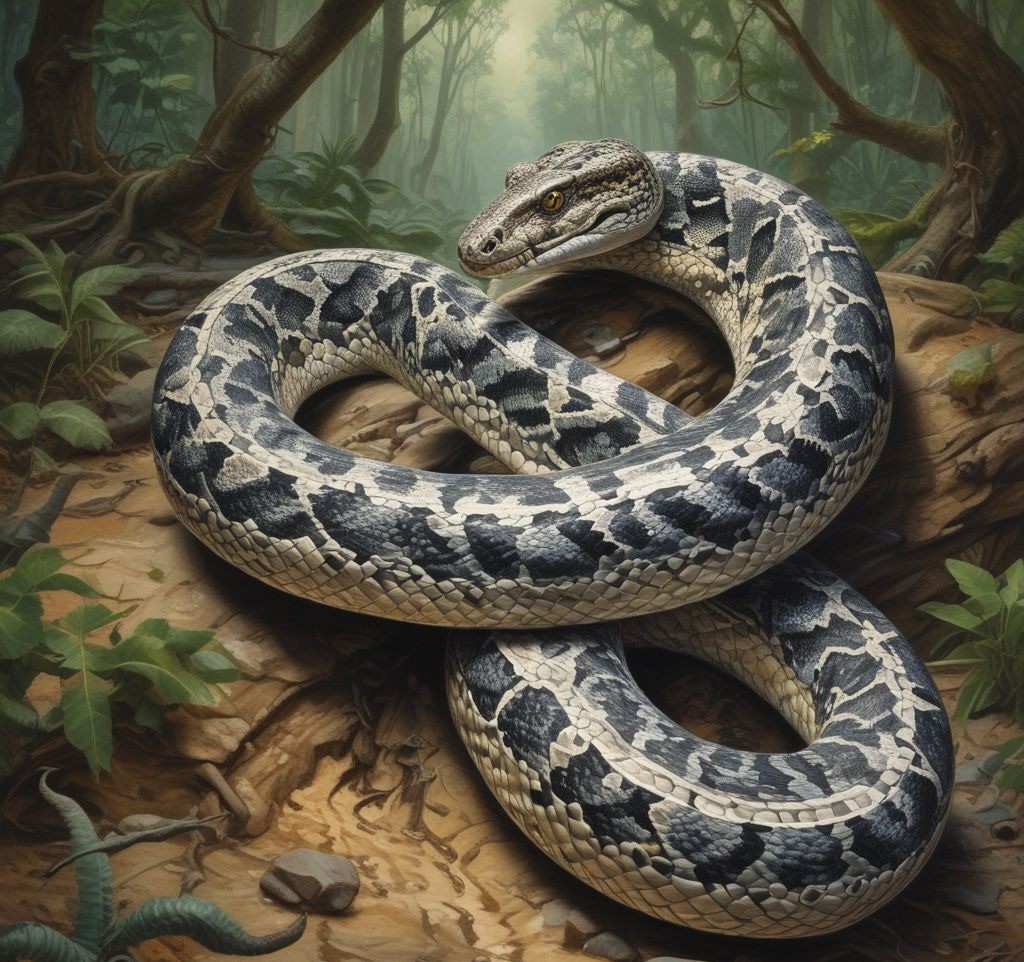Sure! Here’s 🐍 All About the Axanthic Python in the same clear and fun style:
🐍 All About the Axanthic Python
The sleek, black-and-white snake without yellow pigment! 🖤🤍🐍
📖 Quick Overview
| Feature | Details |
|---|---|
| Animal Name | Axanthic Python |
| Habitat | Tropical forests and grasslands (mostly in captivity) |
| Food | Small mammals, birds, and reptiles (Carnivore) |
| Group Name | None (solitary species) |
| Baby Name | Neonate |
| Special Skill | Striking black-and-white pattern due to lack of yellow pigment |
| Danger Level | Not endangered 🟢 |

🌟 What Is an Axanthic Python?
The Axanthic Python is a color morph of the Morelia spilota (carpet python) known for its unique absence of yellow pigment.
This makes its skin look like a dramatic pattern of black, white, and gray — very striking and popular among reptile enthusiasts.
They have:
- Smooth, shiny scales
- Strong, muscular bodies
- Typical python head shape with heat-sensing pits
- Patterns that help them camouflage in shadows and light
📍 Where Do Axanthic Pythons Live?
Axanthic pythons are mostly bred in captivity, but their wild relatives live in:
🗺️ Found In:
- Australia and New Guinea (wild Morelia spilota)
- Tropical forests, woodlands, and grasslands
🌿 Habitat:
- Dense forests and rocky areas
- Tree branches and forest floor
🍽️ What Do Axanthic Pythons Eat?
They are carnivores and skilled hunters.
🍴 Favorite foods:
- Small mammals like rats and mice
- Birds and eggs
- Lizards and other reptiles
They use constriction to catch and subdue prey.
👨👩👧👦 Family and Groups
Axanthic pythons are solitary snakes.
👶 Baby Axanthic Python = Neonate
Hatch from eggs laid by the female; young are independent from birth.
💪 Axanthic Python Powers
- Excellent climbers and swimmers
- Use heat-sensing pits to detect warm-blooded prey
- Constrict prey tightly to capture food
- Can go weeks without eating after a big meal
- Unique coloration helps with camouflage in shaded habitats
💡 Fun Facts About Axanthic Pythons
- “Axanthic” means without yellow pigment — very rare in the wild!
- Their bold black-and-white look makes them popular pets
- Carpet pythons can grow up to 10 feet (3 meters) long
- They are non-venomous but powerful constrictors
- Can live 15-20 years in captivity with good care
🛑 Are Axanthic Pythons in Danger?
- Wild carpet pythons are generally stable but habitat loss can impact populations.
- Axanthic morphs are mainly captive-bred and not endangered.
💚 How Can We Help Them?
- Support habitat protection for wild python relatives
- Avoid illegal wildlife trade
- Learn about proper snake care if keeping as pets
- Promote conservation education about reptiles
✏️ Activity: Design Your Own Python Pattern!
🎨 Use markers or paints:
- Draw snake scales with your own black, white, and gray pattern
- Imagine what kind of camouflage it provides
- Give your python a cool name and story!

✅ Summary
| 🗂️ Category | 🐍 Axanthic Python |
|---|---|
| Type | Reptile (Python) |
| Diet | Carnivore (small mammals, birds) |
| Habitat | Tropical forests and woodlands |
| Group | Solitary |
| Special Skill | Unique black-and-white pattern without yellow pigment |
| Danger Level | Not endangered 🟢 |